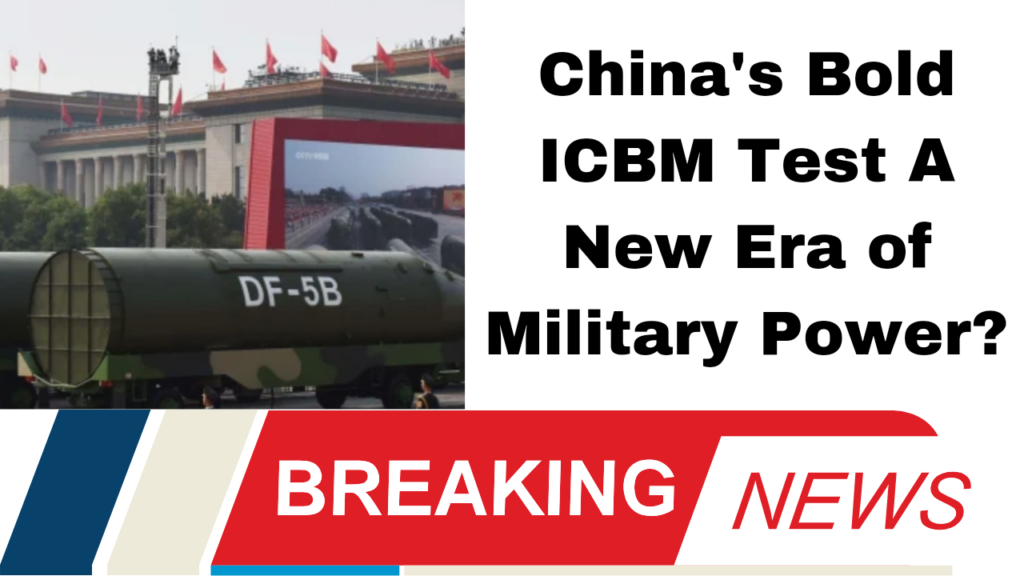On Wednesday, China announced the successful test-firing of an intercontinental ballistic missile (ICBM) into the Pacific Ocean, marking a significant development in its military capabilities and raising alarms internationally. This public test comes at a time of heightened tensions with the United States, as China continues to expand its nuclear arsenal.
The People’s Liberation Army (PLA) Rocket Force launched the ICBM at 8:44 a.m. local time (8:44 p.m. Tuesday ET), according to the Chinese defense ministry. The missile, which carried a simulated warhead, landed accurately in a designated area of the high seas. However, specifics regarding the missile’s trajectory and landing site remain unclear. The ministry described the test as a routine part of the Rocket Force’s annual military training, asserting it adhered to international law and was not aimed at any particular country.
Analysts noted that this was the first ICBM launch into international waters publicly announced by China since 1980. Ankit Panda, a nuclear weapons expert, expressed skepticism about the claim of routine testing, highlighting the rarity of such events in recent history.
Japan’s government responded swiftly, with spokesperson Yoshimasa Hayashi confirming that officials were still gathering information about the launch. While he stated the missile did not seem to have passed over Japan and no damage was reported, he emphasized concerns over China’s increasing military activity and expanding nuclear arsenal. Hayashi criticized the lack of transparency surrounding China’s military developments, calling it a serious concern for both Japan and the broader international community.
ICBMs have a range exceeding 3,400 miles and are primarily designed to carry nuclear warheads. Traditionally, China has tested long-range missiles over its own territory, making this launch particularly noteworthy.
This test coincides with the annual United Nations General Assembly in New York and reflects China’s ongoing military modernization under President Xi Jinping, who aims to establish a “world-class” military by 2049. Recent reports indicate a rapid increase in China’s nuclear arsenal, with estimates suggesting a rise from 410 warheads in January 2023 to 500 in January 2024. In contrast, the United States and Russia possess 3,708 and 4,380 active nuclear warheads, respectively.
While China maintains a “no first use” policy regarding nuclear weapons, U.S. officials have noted that China is expanding its arsenal at an unexpected pace, potentially quadrupling its warheads to 1,500 by 2035.
The missile test occurs against a backdrop of increased military activity in the Asia-Pacific region, particularly from North Korea, which has accelerated its weapons testing. North Korea recently launched multiple short-range ballistic missiles, framing its actions as a response to joint military exercises by the U.S., South Korea, and others.
Moreover, China continues to exert military pressure on Taiwan, conducting near-daily sorties near the self-governing island. Tensions are further exacerbated in the South China Sea, where territorial disputes have led to confrontations between China and other nations, including the Philippines.
As regional tensions continue to escalate, the international community watches closely, seeking clarity and stability in an increasingly volatile landscape.
